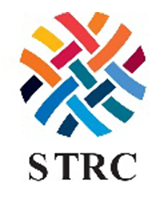 Dr. Matthew Hardwick, Resinnova Labs
Dr. Matthew Hardwick, Resinnova Labs
All industries were hit hard by the COVID-19 pandemic; perhaps none more than the textile industry. With orders drying up and retail and manufacturing facilities going dark, those in charge of textile companies had big decisions and, potentially, big changes to make. With the need for widespread masking, many companies chose to pitch in and shift production to make the much needed and in demand face masks. Still others shifted to incorporation of antimicrobials into their textiles. Even companies that already used antimicrobials in their production lines doubled down and invested even further into both production and marketing with the hopes to save lives and sales.
The antimicrobial textile world has largely been free of too much government oversight due to the “treated article exemption” in section 40 CFR 152.25(a) of the Federal Insecticide, Fungicide, and Rodenticide Act (FIFRA). This exemption allows for incorporation of antimicrobial treatments that claim to protect the article. There is one very important aspect of this exemption that came into clear focus during the pandemic: it does not include claims against human pathogens. Moreover, viruses do not damage textiles. Therefore, any treatment of an article marketed as antiviral (a subset of antimicrobial chemistries) cannot use the treated article exemption. As textiles were poised to have a large impact on the pandemic through the incorporation of antimicrobials, and specifically antivirals, the Environmental Protection Agency (EPA) and Food and Drug Administration (FDA) paid close attention to this marketplace. Many textile companies have chosen to embrace this new scrutiny and are actively seeking EPA registrations and FDA clearances for their marketing claims. What they have found as they engage with these federal agencies has been eye-opening.
As an independent microbiology laboratory with a specialty in antimicrobial textiles, ResInnova Labs has been involved in many of these discussions. I will spend time walking you through antimicrobial textile testing of the past and how it has changed during the pandemic. Specifically, I will give insights into what the federal agencies have indicated are “must haves” in making antimicrobial marketing claims.
